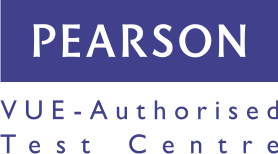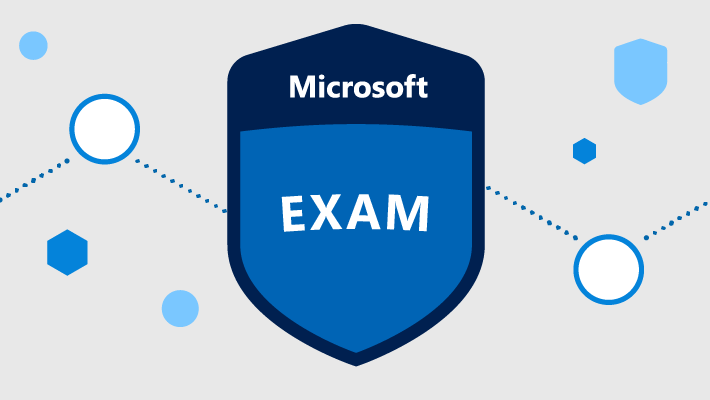O kursie
W tym kursie studenci nauczą się jak obsługiwać i konfigurować pulpity Windows w środowisku organizacyjnym. Studenci rozwinięą umiejętności, w tym instalowanie, dostosowywanie i aktualizowanie systemów operacyjnych Windows 10 i późniejszych wersji. Studenci nauczą się zarządzać przechowywaniem, plikami i urządzeniami, a także konfigurować łączność sieciową dla systemów Windows. Studenci dowiedzą się także, jak zabezpieczyć system operacyjny Windows i chronić dane na urządzeniu. Wreszcie, studenci nauczą się zarządzać i rozwiązywać problemy z klientami systemu Windows.
Profil odbiorcy
Kandydaci na ten egzamin to specjaliści IT, którzy wykonują instalację, konfigurację, ogólną lokalną obsługę i utrzymanie podstawowych usług systemu Windows 10 i późniejszych. Kandydaci mogą również być zaznajomieni z scenariuszami przedsiębiorstwa i usługami zintegrowanymi z chmurą.
Po ukończeniu kursu
Po ukończeniu tego kursu, uczestnicy powinni być w stanie:
Moduł 1: Instalacja systemu Windows
Ten moduł obejmuje instalację systemu operacyjnego Windows 10. Studenci dowiedzą się o różnych edycjach systemu Windows 10, wymaganiach oraz nowych funkcjach wprowadzonych. Moduł ten omawia sposób instalacji systemu operacyjnego, a także metody migracji i aktualizacji. Studenci dowiedzą się również o narzędziach powszechnie używanych w procesie wdrażania.
Lekcje:
Moduł 2: Konfiguracja i personalizacja po instalacji
Ten moduł obejmuje typowe zadania po instalacji systemu Windows 10. Studenci dowiedzą się, jak dostosować interfejs użytkownika oraz korzystać z panelu sterowania i aplikacji ustawień do konfigurowania typowych ustawień systemu operacyjnego. Ten kurs wprowadzi również studentów w PowerShell. Moduł ten omówi również, jak działają sterowniki urządzeń. Studenci zostaną także wprowadzeni do zarządzania i konfigurowania urządzeń peryferyjnych, takich jak drukarki.
Lekcje:
Moduł 3: Aktualizowanie systemu Windows w systemie Windows 10
W tym module studenci dowiedzą się, jak utrzymywać system Windows 10 aktualnym. Studenci zostaną wprowadzeni w nowy model obsługi systemu Windows i jego zastosowanie w różnych scenariuszach. Studenci nauczą się różnych metod aktualizowania systemu Windows i aplikacji, a także zarządzania aktualizacjami za pomocą narzędzi takich jak zasady grupy i Windows Update for Business.
Lekcje:
Moduł 4: Konfiguracja sieciowa
W tym module studenci dowiedzą się o koncepcjach sieciowych. Moduł ten wprowadzi w IPv4 i IPv6, oraz koncepcje takie jak DNS. Studenci nauczą się konfigurować ustawienia sieci w systemie Windows, a także dowiedzą się o technologiach sieci bezprzewodowej. Moduł zakończy się metodami zdalnego zarządzania systemem Windows.
Lekcje:
Moduł 5: Konfigurowanie magazynu
Ten moduł obejmuje konfigurację i zarządzanie magazynem w systemie Windows 10. Studenci zostaną wprowadzeni do lokalnych, chmurowych i wirtualnych opcji magazynowania. Ten kurs omówi również konfigurowanie magazynu na urządzeniach klienta i wprowadzi przestrzenie dyskowe.
Lekcje:
Moduł 6: Zarządzanie aplikacjami w systemie Windows 10
W tym module studenci zostaną wprowadzeni w zarządzanie aplikacjami w systemie Windows 10. Ten moduł omówi różne rodzaje aplikacji i obsługiwane metody instalacji. Studenci nauczą się instalować aplikacje za pomocą metod manualnych i automatycznych, a także zarządzać dostarczaniem aplikacji za pomocą Sklepu Windows. Wreszcie, ten moduł omówi różnice między przeglądarkami internetowymi Internet Explorer a Microsoft Edge.
Lekcje:
Moduł 7: Konfigurowanie uwierzytelniania i autoryzacji
Ten moduł wprowadza narzędzia i funkcje systemu Windows 10 do autoryzacji dostępu do klientów systemu Windows 10. Studenci dowiedzą się o metodach logowania użytkowników do systemu Windows 10. Ten moduł omawia również ograniczanie tego, co użytkownicy mogą lub nie mogą robić na urządzeniu za pomocą metod takich jak UAC i typy kont.
Lekcje:
Moduł 8: Konfigurowanie dostępu i użytkowania danych
W tym module studenci dowiedzą się o uprawnieniach. Ten moduł omówi rozważenia dla różnych systemów plików. Studenci nauczą się konfigurować uprawnienia do plików i folderów oraz udostępniać foldery. Moduł zakończy się konfigurowaniem ustawień za pomocą metod takich jak lokalne i zasady grupy.
Lekcje:
Moduł 9: Konfigurowanie ochrony przed zagrożeniami i zaawansowanej ochrony
Ten moduł wprowadza studentów w ochronę urządzeń przed zagrożeniami zewnętrznymi. Studenci dowiedzą się o różnych typach powszechnych zagrożeń. Ten moduł nauczy studentów korzystania z szyfrowania, zapór ogniowych oraz IPSec w celu ochrony przed zagrożeniami. Moduł zakończy się konfigurowaniem i korzystaniem z programu Windows Defender oraz AppLocker.
Lekcje:
Moduł 10: Wsparcie dla środowiska Windows 10
Ten moduł obejmie architekturę Windows 10 i powszechne środowiska. Studenci zostaną wprowadzeni do różnych narzędzi używanych do utrzymania systemu Windows. Ten moduł omówi również metodologie skutecznego rozwiązywania problemów oraz sposób proaktywnego zarządzania i optymalizacji systemu Windows 10.
Lekcje:
Moduł 11: Rozwiązywanie problemów z plikami i aplikacjami
Ten moduł pomoże studentom zaplanować kopię zapasową i odzyskiwanie plików. Studenci nauczą się planować i konfigurować strategie ochrony danych oraz wykonywać różne metody odzyskiwania plików i systemu. Moduł ten obejmuje również powszechne metody rozwiązywania problemów z instalacją aplikacji, problemy z zgodnością oraz rozwiązywanie problemów z przeglądarką.
Lekcje:
Moduł 12: Rozwiązywanie problemów z systemem operacyjnym
W tym module studenci dowiedzą się, jak rozwiązywać problemy związane z uruchamianiem i usługami systemu operacyjnego. Ten moduł nauczy różnych opcji uruchamiania i odzyskiwania, oraz jak rozwiązywać różne usługi systemowe systemu Windows.
Lekcje:
Moduł 13: Rozwiązywanie problemów z sprzętem i sterownikami
Ten moduł wprowadza do rozwiązywania problemów związanych z hardware. Studenci dowiedzą się o zarządzaniu sterownikami i jak rozwiązywać problemy z urządzeniami. Studenci nauczą się również kroków do rozwiązywania problemów sprzętowych systemu oraz zewnętrznych urządzeń peryferyjnych, takich jak dyski USB i drukarki, w tym metody diagnostyczne i naprawcze.
Lekcje:
Uczestnicy powinni rozpocząć ten kurs, posiadając już następujące umiejętności:
Firma jest Autoryzowanym Ośrodkiem Szkoleniowym MICROSOFT Silver Learning
Możesz u nas podejść do egzaminu Pearson VUE
Spółka posiada wpis do ewidencji placówek niepublicznych Nr ew. ES.VIII.4320-6/p.n./2003 wydany z upoważnienia Prezydenta Miasta Łodzi
 |
 |
Zachęcamy do skorzystania z możliwości dofinansowania szkoleń oferowanych przez naszą firmę. Dostępne rozwiązania:
Skontaktuj się z nami, aby uzyskać więcej informacji. Oferujemy pełne wsparcie w tym procesie.
Zapraszamy!
|
|
|
Przewidziany egzamin do szkolenia: MD-100: Windows 10
Zapisz się na egzamin już dzisiaj! Kontakt do Centrum Egzaminacyjnego: it@ntg.pl tel: 502 147 093 lub zapisz się przy pomocy formularza.


Najbliższy termin: 06-10-2025 09:00
Najbliższy termin: Prosimy o kontakt
Najbliższy termin: Prosimy o kontakt
Najbliższy termin: Prosimy o kontakt
Najbliższy termin: Prosimy o kontakt
Najbliższy termin: Prosimy o kontakt
Najbliższy termin: Prosimy o kontakt
Najbliższy termin: Prosimy o kontakt
Najbliższy termin: 17-07-2025 09:00
Najbliższy termin: Prosimy o kontakt
Najbliższy termin: 02-09-2025 09:00
Najbliższy termin: 17-07-2025 09:00
